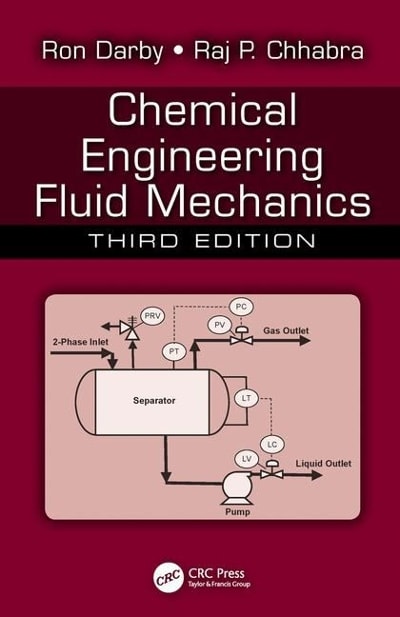An algal sludge is to be clarified by filtering. A lab test is run on the sludge
Question:
An algal sludge is to be clarified by filtering. A lab test is run on the sludge using an area A of the filter medium. At a constant pressure drop of $40 \mathrm{kN} / \mathrm{m}^{2}$, a plot of the time required to collect a volume $\tilde{V}$ of the filtrate times $\Delta P /(\tilde{V} / A)$ versus $\tilde{V} / A$ gives a straight line with a slope of $1.2 \times 10^{6} \mathrm{kN} \mathrm{s} / \mathrm{m}^{4}$ and an intercept of $6.0 \times 10^{4} \mathrm{kN} \mathrm{s} / \mathrm{m}^{3}$. A repeat of the data at a pressure drop of $200 \mathrm{kN} / \mathrm{m}^{2}$ also gave a straight line on the same type of plot, with the same intercept but witha slope of $2.1 \times 10^{6} \mathrm{kN} \mathrm{s} / \mathrm{m}^{4}$. When a filter aid was added to the sludge in an amount equal to $20 %$ of the algae by weight, the lab test gave a straight line with the same intercept but with a slope of $1.4 \times 10^{6} \mathrm{kN} \mathrm{s} / \mathrm{m}^{4}$.
(a) What does this tell you about the sludge?
(b) The sludge is to be filtered using a rotary drum filter, with a diameter of $4 \mathrm{ft}$ and a length of $6 \mathrm{ft}$, operating at a vacuum of $700 \mathrm{~mm} \mathrm{Hg}$ with $35 %$ of the drum submerged. If the drum is rotated at a rate of $2 \mathrm{rpm}$, how many gal of the filtrate will be collected in a day, with and without the filter aid?
(c) What would the answer to (b) be if the drum speed was $4 \mathrm{rpm}$ ?
Step by Step Answer:

Chemical Engineering Fluid Mechanics
ISBN: 9781498724432
3rd Edition
Authors: Ron Darby, Raj P Chhabra




